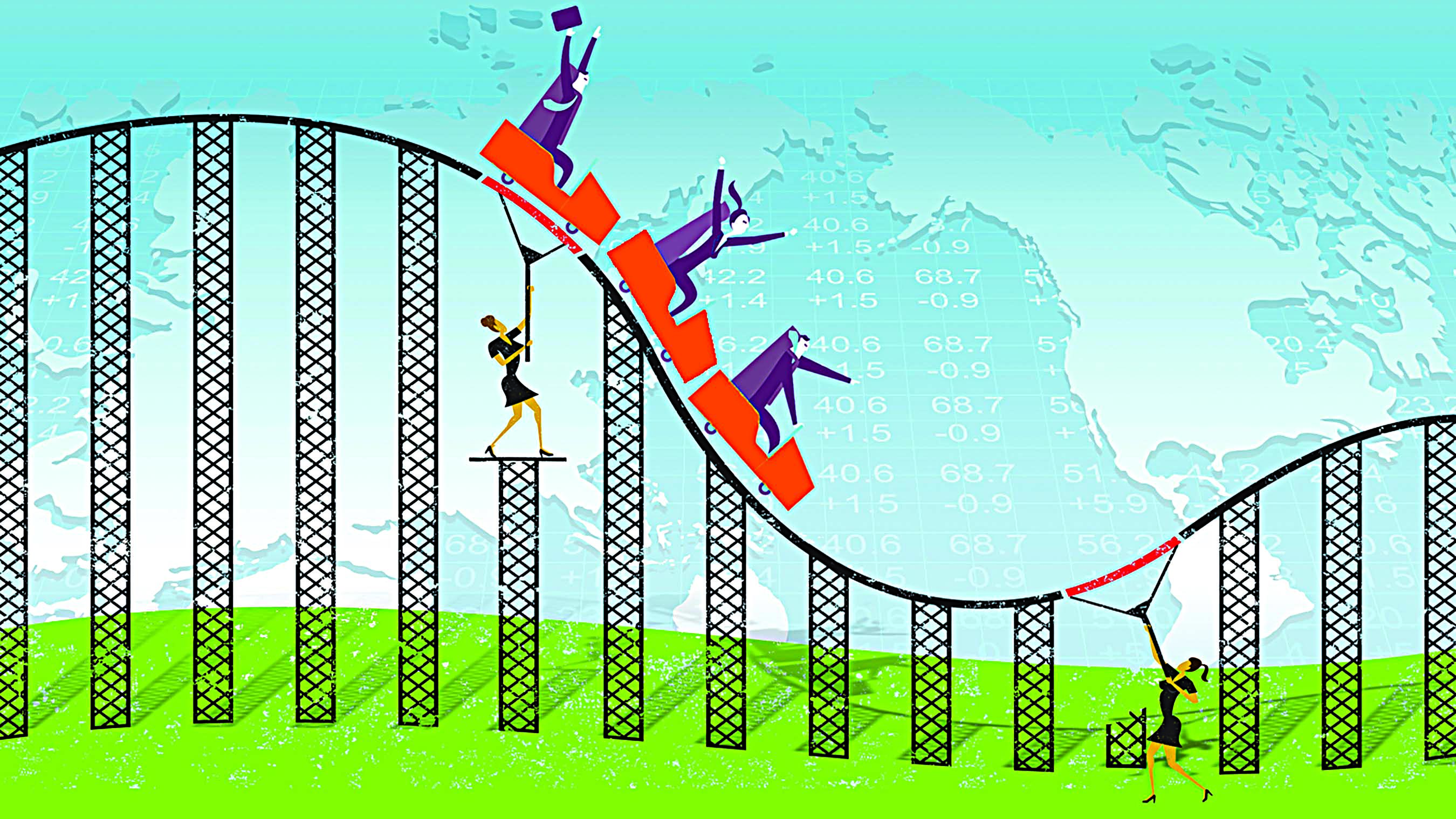Market volatility is normal and inevitable. It is characterized by high trading volumes and problems matching buy and sell orders due to an imbalance of trade orders in one direction. This causes stock prices to change quickly—even so fast that real-time quotes can lag the actual market. One of the difficulties of market volatility is it is very unpredictable, and we do not know when the market will have a big drop, or when it will turn around after a drop and begin recovering.
The COVID-19 global pandemic has caused one of the fastest U.S. stock market plunges in history straight into a bear market. Global economic shutdowns have caused supply chain disruptions, record-breaking unemployment statistics, and significant declines in gross domestic product. Experts are not able to tell us when a vaccine will be available, or if the virus will surge again this fall and winter. All these uncertainties are fueling continued market volatility and we do not know how long it will last but it is probably safe to say it will be many months as the world continues to battle the virus. When the markets are moving up one day and down the next, it can be very nerve-wracking and leave you with a feeling of not knowing what to do with your investments.
So, what should you do during periods of extreme or prolonged market volatility? You have several options, but before doing anything it is best to review your long-term investment goals, target asset allocation, and risk tolerance. Have any of these items changed and if so how? The answer to this question will guide you in what your options are.
Stay the Course
If you stay focused on your long-term goals and they have not changed, it is completely reasonable to do nothing and just ride out the storm. Since market volatility cannot be predicted, just sitting tight will ensure you will not miss out when the market does recover. If we look back in history this is easily illustrated. During the financial crisis of 2007-2009, the ensuing bear market began in October 2007 when the major market indices started declining. They bottomed out on March 9, 2009 and then reversed course beginning on March 10, 2009. The S&P 500 index was up more than 15% by the end of March 2009 and by more than 40% by year end. A more recent example is the stock market dive that occurred in December 2018 where the sudden drop caused a bear market in several leading indices on December 24, 2018. The decline wiped out nearly all the gains for 2018 and the indices posted their worst yearly performance since the aforementioned financial crisis. However, the market reversed course after Christmas and had fully recovered before the end of the first quarter of 2019. So, by just staying in the market you ensure that you will not miss any of the recovery. Coming back to the present—the stock market plunge of March 2020 has been followed in April 2020 by market indices posting their best month in decades.
Re-Balance Back to Target Allocation
In reviewing your portfolio, you may see that the allocation between equity and fixed income obligations has gotten out of alignment with your targeted allocation. If this has happened, it is reasonable to make some adjustments to your portfolio to re-balance it back to your target.
Increase Equity Position
This is where your risk tolerance comes in. If you are very risk tolerant it could be a good opportunity to increase your equity position and capture the gains when the market rebounds. If you have excess cash, you might even want to invest it into the market now while stocks are down.
Investment Options
If you do decide to adjust your portfolio but are more on the conservative side or are nearing retirement, there are several types of investments to consider which will provide some downside protection while still allowing you to be invested in equity:
Low Volatility Funds – these funds focus on companies in defensive sectors such as consumer staples and healthcare and will not move as much in a volatile market.
Defined Outcome ETF’s – these are a relatively new kind of ETF offered by Innovator Capital Management which use option contracts to provide some downside protection while still allowing you to profit when the market is moving up.
Dividend Focused Funds – these are generally comprised of larger and older companies which have weathered past market downturns and provide some income to offset market losses.
Large Cap Funds – if you are not looking for dividends, just investing in large cap companies will offer some safety versus the more volatile short and mid-cap companies.
Trading Strategies
A popular tactic while making trades in times of volatility is to use limit orders instead of market orders. A market order is executed at the prevailing market price. A limit order allows you to buy or sell a security at a specified price. A buy limit order is placed to purchase a security at a specific price or lower. A sell limit order is placed to sell a security at a specific price or higher. As such, you can use limit orders to obtain some control over the prices at which they are trading in times of market volatility. The downside of limit orders is that if the specified price is not reached, the order will not execute, and you may lose out on the trading opportunity.
It is best to do these trades a little bit at a time and not in one fell swoop. Due to the market ups and downs and the inability to predict these movements, making the adjustments over time will smooth out some of the volatility. In addition, avoid placing trades in the first or last 30 minutes of the trading day as the market tends to be more volatile during these times.
Deborah Hobart, CPA is a Financial Advisor at Blue Water Capital Management, LLC, a fee-only financial advisory firm in Apex, NC.








